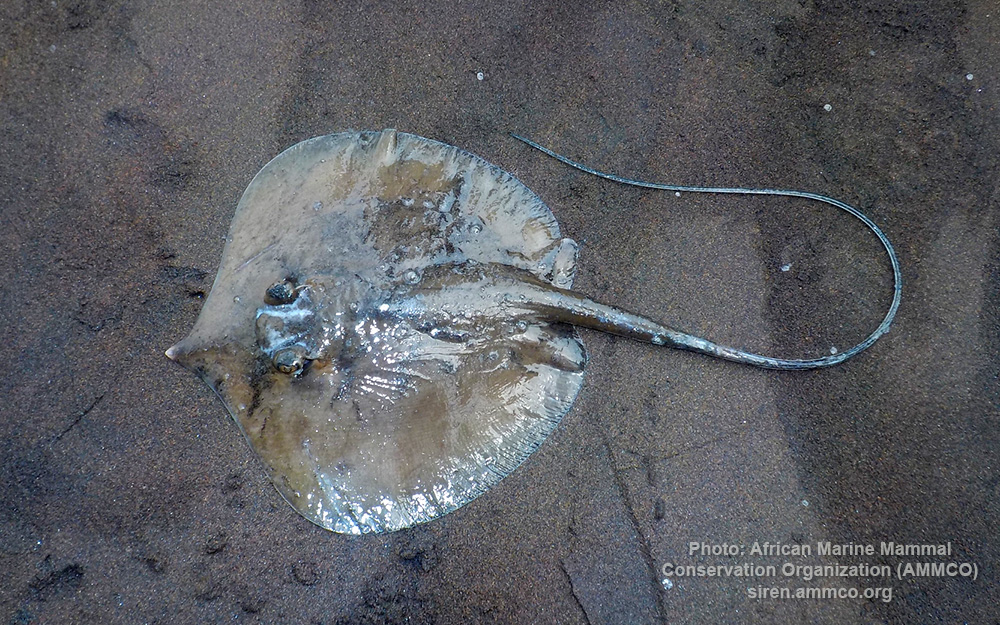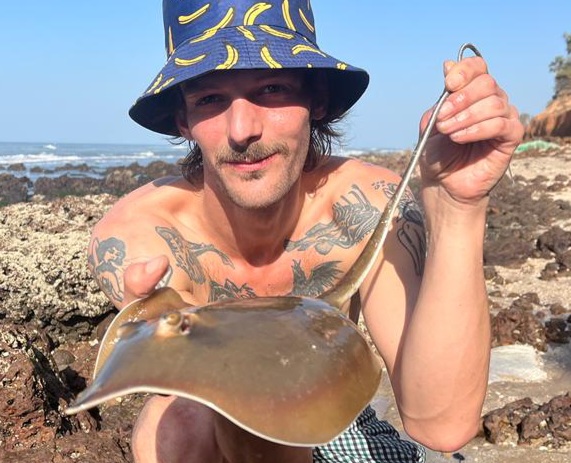Daisy stingray
(Fontitrygon margarita)

Classification
General data
The daisy stingray, Fontitrygon margarita, is a little-known species of stingray in the family Dasyatidae, found in shallow waters along the coast of West Africa.
This species typically grows to 60 cm (24 in) across and has a rounded pectoral fin disc and (in adults) a wide band of dermal denticles over its back. It is characterized by a greatly enlarged, nacreous denticle in the middle of its back called a pearl spine; this feature is shared with the similar but much smaller pearl stingray (F. margaritella), which has often been confused with this species.
The daisy stingray feeds mainly on crustaceans and exhibits aplacental viviparity, with litters of 1–4 young. Heavily pressured by fisheries and possibly habitat degradation, this once-common species is declining and has been assessed as Vulnerable by the International Union for Conservation of Nature (IUCN).
Distribution and habitat
The known range of the daisy stingray extends from Senegal to the Democratic Republic of the Congo; records of it occurring as far as Mauritania and Angola may have been mistakenly based on the pearl stingray.
This bottom-dwelling species is found in marine and brackish waters with a salinity of 20–40 ppt.[4] It favors sandy habitats in shallow coastal waters to a depth of 60 m (200 ft), though most are found between 11 and 20 m (36 and 66 ft). This ray also reportedly frequents lagoons and estuaries; however, this also requires confirmation due to confusion with the pearl stingray.
Description
The pectoral fin disc of the daisy stingray is moderately thin and rounded, measuring about as wide as long. The leading margins of the disc are concave and converge at the pointed, slightly projecting tip of the snout. The eyes are medium-sized and followed by somewhat larger spiracles. There is a curtain of skin between the nares, with a fringed, subtly tri-lobed posterior margin; a pair of shallow grooves run from the skin flap to the corners of the bow-shaped mouth. There are 5 papillae in a transverse row across the floor of the mouth, with the outermost pair set apart from the others. The tooth rows number 24–32 in the upper jaw and 28–36 rows in the lower jaw, and are arranged with a quincunx pattern into pavement-like surfaces. The pelvic fins are short, with the tips projecting just past the disc margin.
The tail is longer than the disc and usually bears a single long, thin stinging spine on the upper surface. The tail is broad and flattened at the base, becoming slender and whip-like past the spine with a low dorsal keel and a well-developed ventral fin fold. There is a massive, circular pearl spine at the center of the disc. Young rays are otherwise smooth-skinned, while older rays over 20 cm (7.9 in) across gain a wide band of small, flattened, circular dermal denticles covering the median third of the back from between the eyes to the base of the tail, as well as small prickles covering the tail behind the sting. This ray is a plain grayish brown above, and whitish below.
It reaches a maximum known disc width of 1 m (3.3 ft) and weight of 17 kg (37 lb), though most do not exceed a width of 60 cm (24 in).
Females grow larger than males. Apart from being much larger, the daisy stingray can also be distinguished from the pearl stingray in having a relatively larger, round pearl spine, fewer tooth rows, and more pectoral fin radials (129–136 versus 113–127).












